
| home | catalogue | history | references | appendix |
 |
surfresearch.com.au
references
: books d
|
|
|
|
|
|
|
|
|
|
|
|
|
|
|
|
|
|
|
|
|
|
|
|
|
|
|
|
| 1971 Dampier, Robert: To the Sandwich Islands on H.M.S. Blonde. Edited by Pauline King Joerger. University Press of Hawaii, Honolulu, 1971. Hardcover, 131 pages, black and white illustrations, map, Notes, Index. Review Robert Dampier (1799–1874) served as the artist and draughtsman who joined the H.M.S. Blonde in Rio de Janeiro The Blonde, under the command of Captain George Anson Byron, was sent to Hawaii in 1825 to return the bodies of King Kamehameha II (Liholiho) and Queen Kamamalu, both of whom had died of measles, aged 28 and 22 respectively, while visiting England. On returning to England, Dampier, like fellow mariner Andrew Bloxam, became a clergyman. See: |
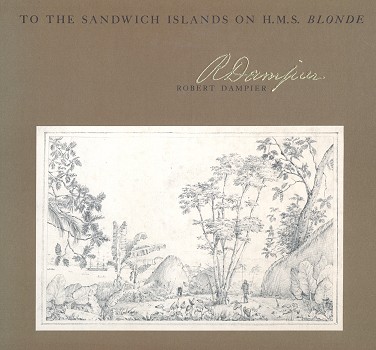 |
| 1840-1947 Dana, Richard Henry: Two Years Before the Mast Thomas Nelson and Sons, London, 1947. Hard cover, 282 pages. First published in 1840 as Two Years Before the Mast - A Personal ... Harper and Brothers, New York, 1840 Review An early account of sailing square rigger ships written by a crew member, Dana voyaged from Boston to the West Coast in 1835-1836 providing a rare insight into life in California before the1849 gold rush. Though Dana did not visit Hawaii, a ten-page section (pages )describing his time in San Diego relates an encounter with "a considerable group of native Hawaiian expatriates.whom he discusses sympathetically" (Forbes). Its publication pre-dates Melville's Moby Dick (1851) and the return around Cape Horn through an extensive ice pack is said to have inspired Coleridge's The Rime of the Ancient Mariner. He reports on the "Kanakas" surfing skills in landing a longboat in the surf at Santa Barbara, pages 51-52, and their unusual fishing techniques, pages 130-131. For these extracts, see: Dana : Two Years Before the Mast (1840). |
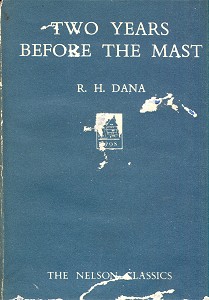 |
| 1940 De Bisschop, Eric: The Voyage of the Kaimiloa From Honolulu to Cannes via Australia and the Cape of Good Hope in a Polynesian double canoe. Translated by Marc Ceppi. G. Bell and Sons Ltd, London, 1940. Hard cover, 310 pages, black and white plates. Review Arriving in Honolulu following the destruction of their Chinese junk, Fou Po II, de Bisschop and mate,Tati(bouet), build a Polynesian double-hull sailing canoe, Kaimiloa. Initially disliking the label "scientist" bestowed by the Hawaiian press, de Bischop "researched" a current controversy, whether the Polynesians occupied the Pacific from the west or from the east. Studying the available sources on ancient Polynesian sailing canoes, which he considered rudimentary, de Bisschop concluded that these craft were able to sail against the prevailing currents and winds of the Pacific, that is the Polynesians came from Asia, and not the Americas. The twin-hulled Kaimiloa was constructed with the intention of "proving" his theory, although the hulls are fitted with watertight compartments and twin rudders, and the sails are canvas and bamboo, all derived from the Chinese junk. Critically, he perceived the importance of fibre cord lashings, that provide flexibility between the hulls, page 25. Whereas "the navigators of old were numerous ... and the readjustment of lashings must have been frequent," with a crew of only two, de Bisschop compromises with a combination of metal chains and springs. The extended stay in Honolulu includes a romantic encounter with Papaleaiaina, whose "mother and grandmother are singing to this day, contrary to custom because they are women, the genealogies which the men no longer sing ... (with) the marvellous exploits of the double canoes of legend," page 39. There is only scant mention of the construction of outrigger canoes, despite their celebrated use in the surf at Waikiki at this time, and note the canoe adjacent to the Kaimiloa under construction, plate A facing page 27. Conceding to Tati's request "to return to France as soon as possible," de Bisschop abandons his scientific research, and decides to sail south and west, with the prevailing winds and currents, page 61. See 1940 de Bisschop: Kaimiloa. |
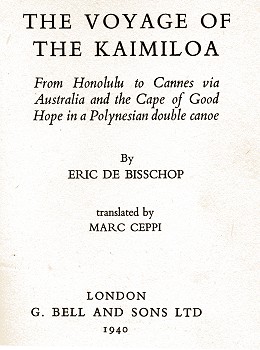 |
| 2004 Dela Vega, Timothy T. et al. : 200 Years of Surfing Literature - An Annoted Bibliography Published by Timothy T. Dela Vega. Produced in Hanapepe, Kaui, Hawaii. 2004. Soft cover, 103 pages, extensive black and white images, Contributors. Review Extensive (but not complete) bibliography of surfing related publications since Captain Cook's first observations. An essential publication for any serious collector or researcher Initially based on Daved Marsh's The Water Log, the book was compiled from contributions from a worldwide group of historians and collectors. Australian contributors include... Paul Scott, Deputy Head of the School of Design, Communication and Information Technology at University of Newcastle. Al Hunt, International Tour Director for the ASP. Bob Smith, Victoria. Geoff Cater, South Coast, NSW. |
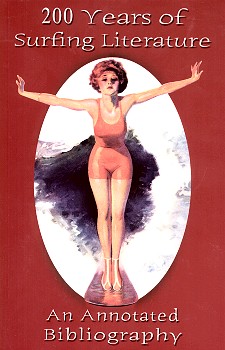 |
| 2011 Dela Vega, Timothy Tovar. et al. : Surfing in Hawaii - 1778-1930 (Images of America Series). Arcadia Publishing, Charlestown, South Carolina, 2011. www.arcadiapublishing.com Soft cover, 127 pages, black and white illustrations and photographs, Acknowledgements, Bibliography. Review Following the publication of 200 Years (above), Tim and his TEAM group of researchers produced this excellent work, detailing an extensive collection of surfing images in Hawaii in chronological order. An excellent companion volume to DeSoto Brown's Surfing - Historical Images from the Bishop Museum (2006), which had photographs only and had none of the early surfing illustrations, as featured here in Chapter 1. Importantly, there is minimal repetition between the two books. For other books in the
Images of America Series, see: |
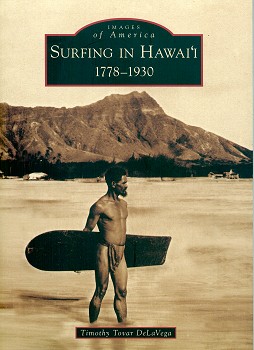 |
| 1969 Dixon, Peter L.: The Complete Book of Surfing - New Revised and Enlarged Edition. Ballantine, U.S.A., 1969. |
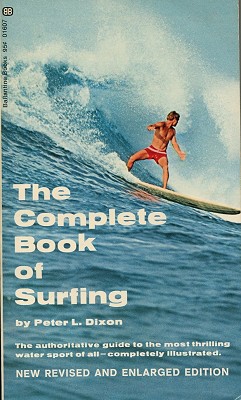 |
| 1985 Dutton, Geoffrey : Sun, Sea, Surf and Sand - The Myth of the Beach Oxford University Press, Melbourne Hard cover, 166 pages, colour/black and white illustrations, List of Illustrations, List of Quotations, Index. Review Beautifully presented collection of beach orientated paintings, photographs and poetry/prose by famous Australian artists. Works by Streeton, Boyd, Nolan, Whitely, and the photography of Max Dupain are featured. Accompanying text concentrates on the artistic response to the coastal environment with only brief, but glowing, references to surfriding. See Notes on Australian Surf Culture. |
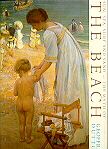 |
| a |
|
|
|
|
|
|
|
|
|
|
|
|
|
|
|
|
|
|
|
|
|
|
|
|
|

| home | catalogue | history | references | appendix |